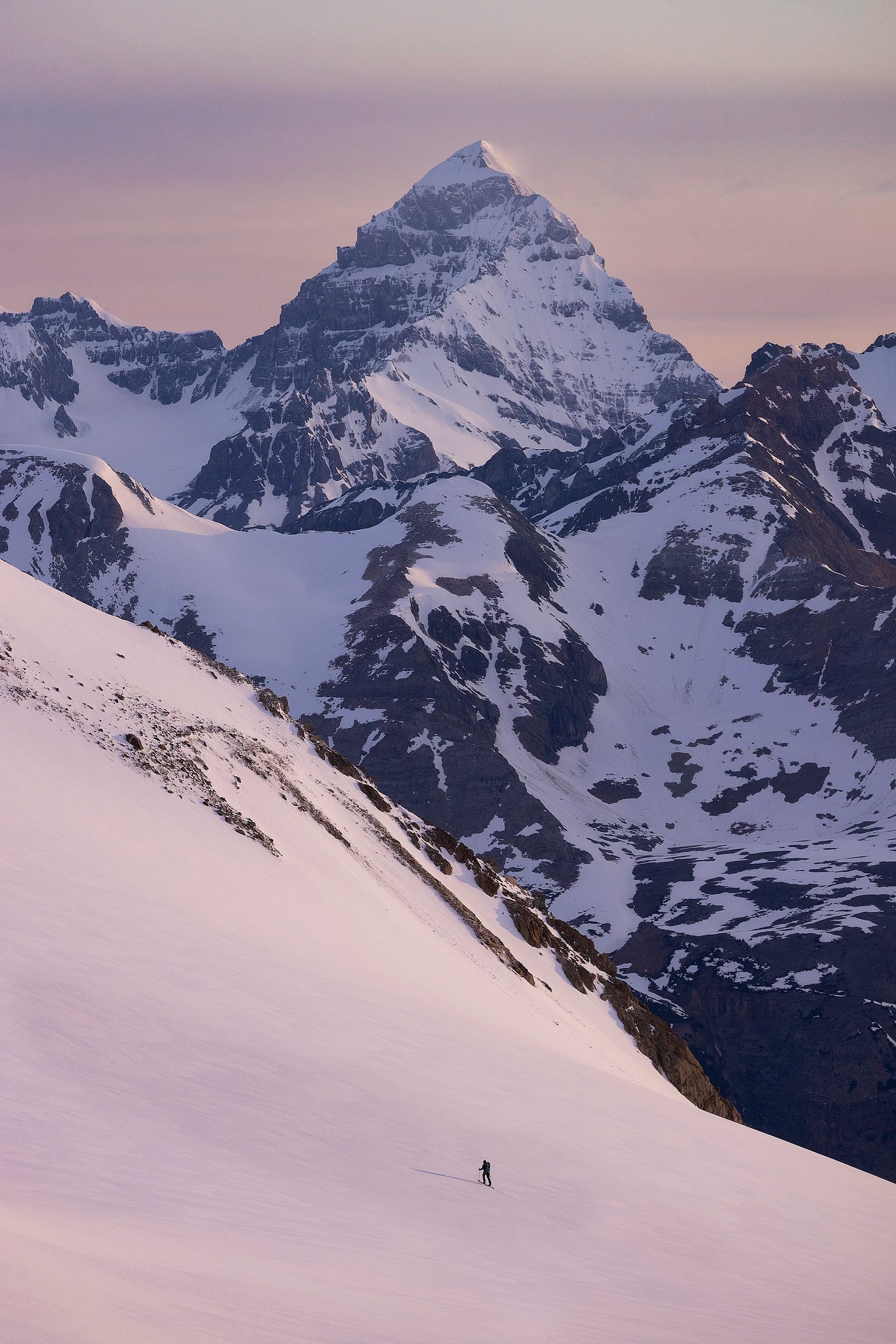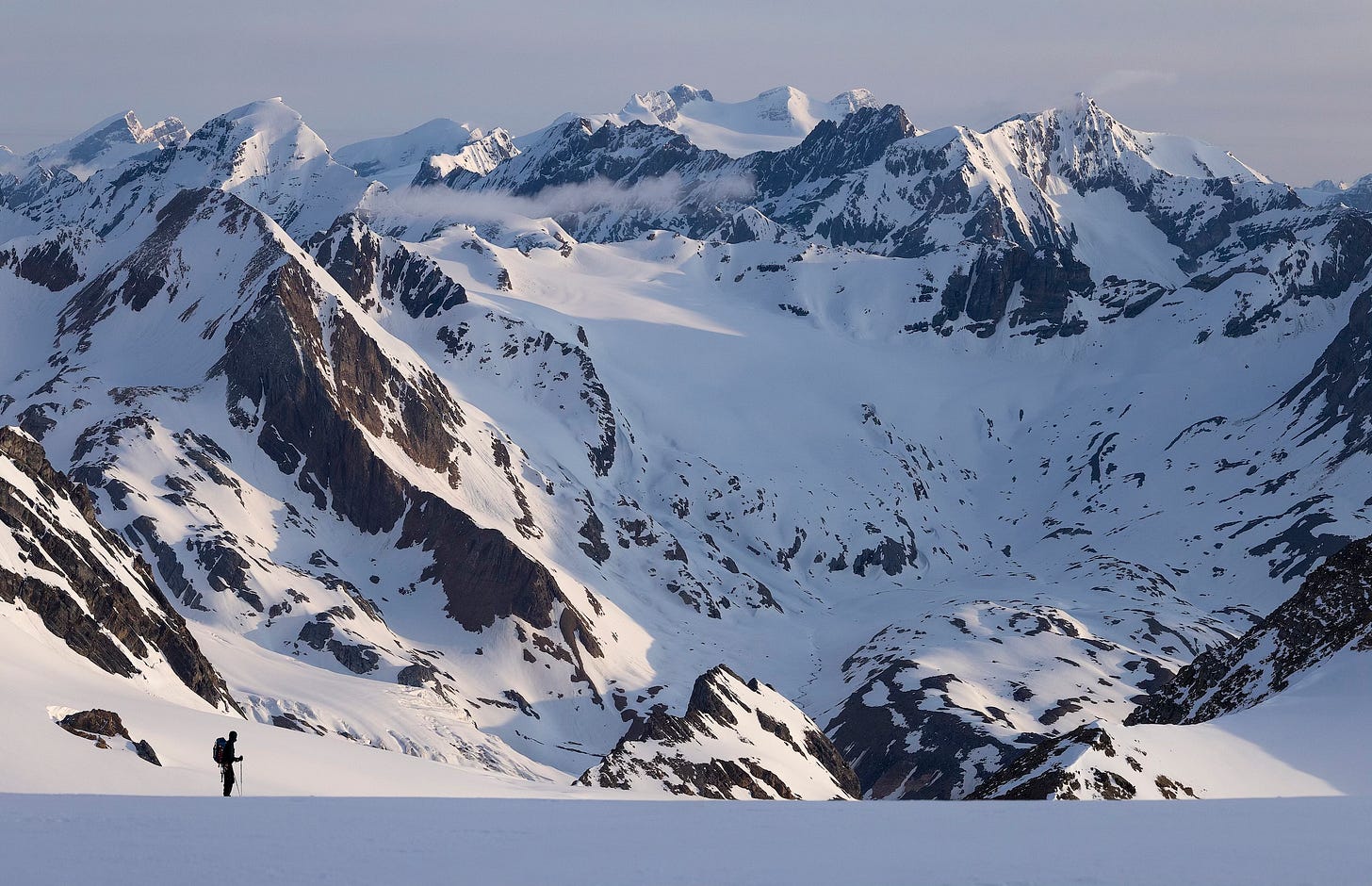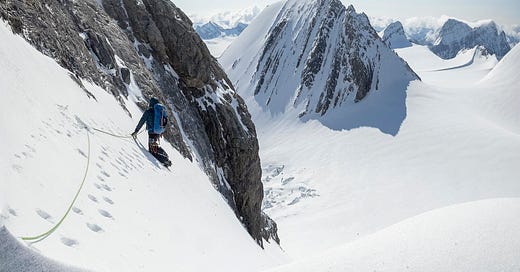[Gallery] Alpine Perspectives from the Freshfield Icefield
Plus: 10 tips for combining climbing and photography. ⛏️
In early June of this year, I had the opportunity to fill in what was, for me, a glaring gap on the map of Banff National Park: the Freshfield Icefield. I've seen it from afar, from many different vantage points — from the Wapta Icefield, Columbia Icefield, and many high points on the Continental Divide. It’s a vast area I’ll have to return to many times to explore thoroughly, but it was incredible to finally see it at ‘ground level’ and climb a handful of peaks in the area.
Several people have asked me about photographing while climbing or ski mountaineering, including how to decide when to pull the camera out. Climbing takes a lot of physical effort and mental focus, making photography considerably more challenging compared to roadside shoots. This gallery includes my thoughts on the subject, which are summarized below in a series of tips.

It’s important to be organized, to know how to anticipate and be efficient when you’re trying to blend climbing and photography.
Both disciplines require very different gear from each other, so right off the bat, you’ll be carrying more. You have got to be willing to pay the price, and make sure your fitness level is up for the demands of carrying a heavier load in the alpine. Often you’ll be with others and you don’t want to get in the way of the progress of the group, nor their enjoyment. Safety is also a factor. For all these reasons, you want to make sure you can access your photography gear quickly.
A lot of planning starts at home with the decisions I make about which gear to bring, taking into account the terrain I’ll encounter, the physical output required, what kinds of filters I might need, etc. Try to visualize what the climb might require and the landscapes you’ll be in. Various apps like Google Earth can help you pre-visualize the terrain. Similarly, you can bring gear on the trip but leave some behind at the tent. On a technical day of climbing, for instance, you may want to leave a heavy telephoto lens behind but still use it to photograph on other excursions. Occasionally, I may wish I hadn’t left a certain piece of gear behind, but if I’m in the right mindset, I don’t dwell on that and simply use it as a creative constraint.

I love the LowePro PhotoSport pack featured here for backcountry excursions, which keeps my camera gear safe and organized when it’s stored away, but also provides room for my mountaineering gear. You may also opt for using a belt system, but this can be cumbersome to carry, and I’ve found I only benefited from it 10% of the time. With the backpack system, I pull out my camera when I see great potential and carry my camera around my neck unless I’m in very technical terrain or don’t see an opportunity for great photography. It’s all about weighing the benefits of having the gear in hand versus moving without taking any photos.
Thinking ahead can minimize your impact on the group and your experience. Before you leave, get in tune with your environment, including the weather, clouds and light, and think through which gear you’ll need. The key is to be organized so that when you put the bag down to take the camera out, you’re not fishing for gear and holding up your group (as much as possible). I’ll even try to think of which lens I should start with so that I’m not switching lenses on the first photo stop. Of course, we can’t always predict it, but being mindful goes a long way.
Try to be proactive rather than only reactive to photography opportunities. For instance, you may need to get out ahead of the group to capture them approaching you. Instead of asking them to hold up, anticipate these moments. When it’s safe to do so, get ahead of them beforehand. Communicate with your partners if there’s something you really need to make the shot, but be mindful of not stopping the flow too much. It’s all about timing and discernment!
10 Tips for Photographing While Climbing or Ski Mountaineering
To summarize:
1. Be prepared and train for the extra load.
2. Choose your gear wisely.
3. Plan and visualize in advance.
4. Pack smart and stay organized.
5. Be efficient, respect the group and communicate your needs.
6. Prioritize safety.
7. Think ahead about which lenses you might need, and when.
8. Embrace limitations and creative constraints.
9. Be proactive, not only reactive, and anticipate a good shot in the making.
10. Practice good timing and discernment; make adjustments from past learning.
If you have any specific questions, please feel free to use the Comments below!
Quick Links
Online Store - Prints, Books and More















Stunning photos and engaging commentary along the way! Thank you!
Great article Paul, thanks! I’m no mountaineer and am way too chicken to go to the exposed spots in a lot of these photos, but many of your tips apply even to hiking trips.